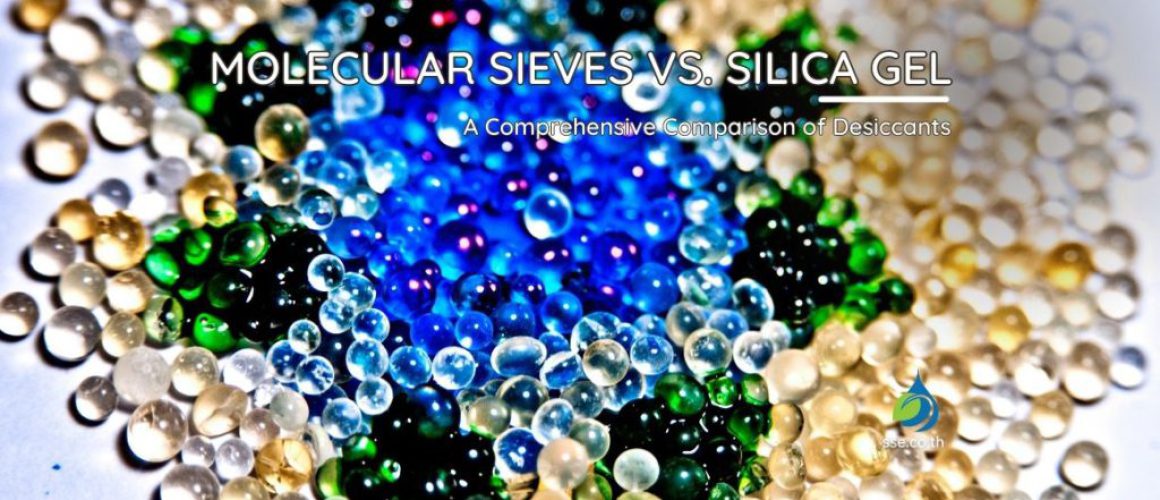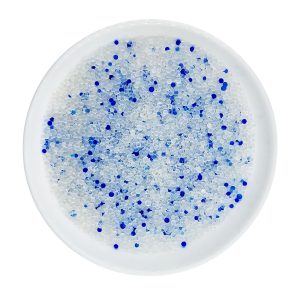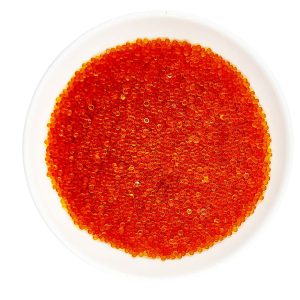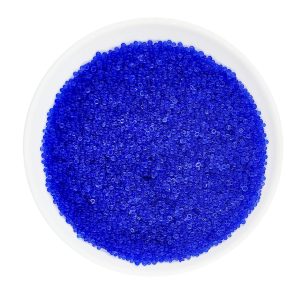Molecular Sieves vs. Silica Gel

Table of Contents
Molecular Sieves vs. Silica Gel: An In-Depth Comparison of Desiccants
Protecting products from moisture degradation is crucial, particularly in industries such as healthcare, electronics, and food packaging. Molecular sieves and silica gel are two of the most commonly used desiccants to control moisture and maintain product quality over time. This comprehensive comparison of molecular sieves and silica gel will help you understand their differences and make an informed decision when selecting the right desiccant for your needs.
Introduction to Desiccants
Desiccants are substances that can remove moisture from the surrounding environment. They are widely used in various industries to protect sensitive products from the detrimental effects of humidity, such as degradation, mold growth, and loss of potency. The choice of desiccant can significantly impact the performance, longevity, and overall quality of the product.
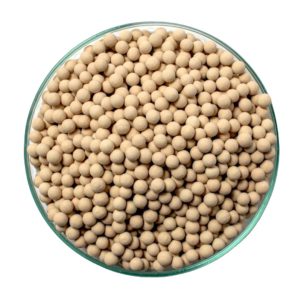 โมเลกุลลาร์ ซีฟ ออกซิเจน JLOX500 PSA 1.6-2.5mm Molecular Sieve (125kg/drum)
โมเลกุลลาร์ ซีฟ ออกซิเจน JLOX500 PSA 1.6-2.5mm Molecular Sieve (125kg/drum) ลด CO2 และความชื้นด้วย 13x โมเลกุลลาร์ ซีฟ | ขายส่ง 125kg/กล่อง | คุณภาพดี | ตรวจสอบและกรองอากาศ
ลด CO2 และความชื้นด้วย 13x โมเลกุลลาร์ ซีฟ | ขายส่ง 125kg/กล่อง | คุณภาพดี | ตรวจสอบและกรองอากาศ โมเลกุลลาร์ ซีฟ 13x โมเลกุลตะแกรงดูดความชื้นสำหรับการคายน้ำโดยทั่วไป 1.6-2.5mm Molecular Sieve 13x (125kg/drum)
โมเลกุลลาร์ ซีฟ 13x โมเลกุลตะแกรงดูดความชื้นสำหรับการคายน้ำโดยทั่วไป 1.6-2.5mm Molecular Sieve 13x (125kg/drum) โมเลกุลลาร์ ซีฟ JLOX-500 และ JLOX-501 ด้วยเทคโนโลยี PSA สร้างออกซิเจนความบริสุทธิ์สูง มีประสิทธิภาพสูงและคุ้มค่า
โมเลกุลลาร์ ซีฟ JLOX-500 และ JLOX-501 ด้วยเทคโนโลยี PSA สร้างออกซิเจนความบริสุทธิ์สูง มีประสิทธิภาพสูงและคุ้มค่า
Molecular Sieves: A Closer Look
Molecular sieves are a type of aluminosilicate material characterized by a 3D crystalline structure with interconnected pores of uniform size. These pores allow the molecular sieve to selectively adsorb water molecules and other small molecules, while excluding larger ones. Molecular sieves are available in various pore sizes, with the most common ones being 3A, 4A, 5A, and 13X.
Molecular sieves have several advantages as desiccants:
- High adsorption capacity: Molecular sieves can adsorb up to 22% of their weight in water, making them highly effective in removing moisture.
- Fast adsorption rate: Due to their crystalline structure, molecular sieves can trap moisture more quickly than other desiccants.
- High affinity for water: Molecular sieves have a higher affinity for water molecules than most other desiccants, allowing them to reduce relative humidity to extremely low levels.
- Stability at high temperatures: Molecular sieves maintain their performance and structure even at elevated temperatures, making them suitable for high-temperature applications.
- Regenerability: Molecular sieves can be regenerated by heating them to remove adsorbed water, allowing for reuse in multiple cycles.
Silica Gel: A Closer Look
Silica gel is a form of amorphous silica that has been processed into granules or beads. It is composed of a network of microscopic pores that provide a large surface area for the adsorption of water and other molecules. Silica gel functions like a sponge, drawing moisture into its many pores.
Silica gel has several advantages as desiccants:
- High adsorption capacity: Silica gel can absorb up to 40% of its weight in water, making it a highly effective moisture-removing agent.
- Non-toxic and FDA-approved: Silica gel is non-toxic and approved by the FDA for use in food and drug packaging applications.
- Wide range of uses: Due to its versatility and non-toxic nature, silica gel can be used in various industries and applications, including pharmaceuticals, electronics, and food packaging.
- Regenerability: Like molecular sieves, silica gel can be regenerated by heating it to remove adsorbed moisture, allowing for reuse in multiple cycles.
In-Depth Comparison: Molecular Sieves vs. Silica Gel
To better understand the differences between molecular sieves and silica gel, we’ll compare their properties and performance in various categories.
Adsorption Capacity
Silica gel has a higher adsorption capacity (up to 40% of its weight) than molecular sieves (up to 22% of their weight). This means that, with the same amount of desiccant, silica gel can remove more moisture from the environment than molecular sieves. However, molecular sieves have a higher affinity for water absorption, enabling them to achieve lower relative humidity levels compared to silica gel. For applications that require very low humidity levels, molecular sieves are the preferred choice.
Adsorption Rate
Molecular sieves have a faster adsorption rate than silica gel, thanks to their unique crystalline structure. This makes them more effective in rapidly reducing humidity levels, which can be especially beneficial in industries that require strict moisture control, such as pharmaceuticals and electronics.
Temperature Stability
Molecular sieves maintain their performance and stability at high temperatures, whereas silica gel’s functionality decreases under elevated temperatures. This makes molecular sieves more suitable for applications that involve high-temperature processes or storage conditions.
Capacity at Low Relative Humidity (RH)
Molecular sieves outperform silica gel in terms of adsorption capacity at low relative humidity levels. In situations where maintaining a very low humidity level is crucial, molecular sieves are the preferred option.
How to Choose: Molecular Sieves vs. Silica Gel
Several factors should be considered when deciding between molecular sieves and silica gel as desiccants for your specific application:
- Relative Humidity Requirements: If your application requires maintaining extremely low humidity levels, molecular sieves are the better choice due to their higher affinity for water absorption.
- Temperature Range: Consider the temperature range of your application. If high temperatures are involved, molecular sieves are more suitable due to their stability under elevated temperatures.
- Moisture Fluctuations: If the environment is subject to rapid changes in humidity levels, molecular sieves may be more effective due to their faster adsorption rate.
- Pressure Changes: Both molecular sieves and silica gel can withstand pressure changes. However, the choice between the two will depend on other factors such as temperature range and humidity requirements.
- Mechanical Forces: Consider the mechanical forces your desiccant may be subjected to during use or transportation. Both molecular sieves and silica gel can withstand mechanical forces, but their performance may vary depending on the specific application.
- Assembly Options: Depending on your product packaging and assembly requirements, one desiccant may be more suitable than the other. Consult with a packaging specialist to determine the best option for your needs.
Frequently Asked Questions Molecular Sieves vs. Silica Gel
What is the difference between molecular sieve and silica gel?
Molecular sieves are aluminosilicate materials that absorb water vapor through their 3D structure, while silica gel is a form of silica processed into granules or beads. Molecular sieves have a higher affinity for water absorption and work better in low humidity and high-temperature environments, whereas silica gel absorbs up to 40% of its weight in water and is FDA-approved for food and drug packaging.
How effective are molecular sieves?
Molecular sieves are highly effective desiccants, particularly in low humidity environments and high temperatures. They can quickly and aggressively trap moisture, making them ideal for products requiring low humidity.
How effective are silica gel packets?
Silica gel packets can absorb up to 35-40% of their own weight in water, making them effective desiccants for many applications. However, silica gel’s absorptive strength is typically limited to bringing the relative humidity down to about 5%.
Which moisture absorber is best?
The choice between molecular sieves and silica gel depends on the specific application, desired humidity level, and environmental conditions. Each desiccant has its advantages and should be chosen based on the specific requirements of the product being protected.
What is the best desiccant for a storage unit?
Both molecular sieves and silica gel can be effective in a storage unit, but the choice depends on the storage unit’s conditions and the desired level of humidity control. Consider factors like temperature fluctuations, relative humidity, and the products being stored when making your decision.
What is the absorption rate of molecular sieves?
Molecular sieves have an excellent rate of adsorption, quickly capturing moisture from the surrounding environment. Their high affinity for water absorption enables them to reduce the relative humidity in an air-tight package to nearly 0%.
How long do molecular sieves take to work?
Molecular sieves begin to work as soon as they come into contact with moisture, absorbing water vapor quickly and aggressively. The time required to achieve the desired humidity level depends on the specific application and environmental conditions.
How long do molecular sieves last?
The lifespan of molecular sieves depends on factors such as the number of regeneration cycles, the conditions they are exposed to, and the application. With proper care and regeneration, molecular sieves can be reused multiple times before needing replacement.
How much water can 3A molecular sieves absorb?
3A molecular sieves can typically absorb around 20% of their weight in water, depending on the specific environmental conditions and application.
How many times can molecular sieves be reused?
Molecular sieves can be reused multiple times with proper regeneration, which involves heating them to a specific temperature and removing the absorbed moisture. The exact number of regeneration cycles depends on the application and conditions.
How long is a desiccant effective?
The effectiveness of a desiccant depends on factors such as the desiccant type, the environment, and the specific application. With proper care, both molecular sieves and silica gel can provide effective moisture control for an extended period.
How long are silica gel packets effective?
Silica gel packets can remain effective for a long time if they are not saturated with moisture. Their effectiveness can be extended by regenerating them, which involves heating them to remove absorbed moisture.
What are the disadvantages of silica gel desiccant?
Some disadvantages of silica gel desiccant include its limited capacity to reduce relative humidity to about 5% and its reduced effectiveness at low relative humidity levels compared to molecular sieves. Additionally, silica gel may not perform as well in high-temperature environments.
What is the disadvantage of molecular sieve?
One potential disadvantage of molecular sieves is their higher cost compared to silica gel. Additionally, molecular sieves may not be suitable for all applications due to their aggressive moisture absorption, which could cause damage to some sensitive products.
What is the difference between a desiccant and a silica gel?
What is the difference between a desiccant and a silica gel?
What is the performance of silica gel desiccant?
Silica gel desiccant has good moisture absorption capabilities, with the ability to absorb up to 40% of its weight in water. However, its performance can be limited in low relative humidity environments and high temperatures compared to molecular sieves.
What is high-performance desiccant?
High-performance desiccants are materials that provide superior moisture absorption capabilities and maintain their effectiveness over a wide range of environmental conditions. Molecular sieves are an example of high-performance desiccants due to their aggressive moisture absorption, low humidity capacity, and stability at high temperatures.
What is the fastest desiccant?
Molecular sieves are considered one of the fastest desiccants due to their excellent rate of adsorption and aggressive moisture absorption capabilities. Their ability to quickly capture moisture makes them ideal for applications requiring rapid humidity control.
What is performance dry desiccant?
Performance dry desiccants are materials that effectively absorb moisture from the environment and maintain their performance under various conditions. Examples include molecular sieves and silica gel, both of which can provide effective humidity control in different applications and environments.
Conclusion to Molecular Sieves vs. Silica Gel
Both molecular sieves and silica gel offer unique advantages as desiccants, and the choice between them will depend on your specific application requirements. Molecular sieves are generally preferred for applications that require very low humidity levels, rapid moisture adsorption, and stability at high temperatures. On the other hand, silica gel is a versatile, non-toxic, and FDA-approved desiccant with a higher adsorption capacity, making it suitable for a wide range of industries and applications.
By understanding the differences between molecular sieves and silica gel, as well as the factors to consider when selecting a desiccant, you can make an informed decision to ensure the longevity and quality of your products.
Regeneration and Reuse of Molecular Sieves
The Environmental Impact of Molecular Sieves
Your Comprehensive Guide to Molecular Sieves
ขอบคุณที่ใช้เวลาอ่านบทความของเราเกี่ยวกับการป้องกันความชื้น ทางเราหวังว่าท่านจะได้รับข้อมูลที่มีคุณค่าและเป็นประโยชน์ ทางเรายินดีให้บริการการปรึกษาฟรีเพื่อพูดคุยเกี่ยวกับความต้องการของท่านและให้คำแนะนำเกี่ยวกับวิธีการป้องกันความชื้นที่กำหนดเฉพาะสำหรับคุณ โปรดติดต่อเราที่ 0858124188 เพื่อนัดหมายการปรึกษาหรือเยี่ยมชมร้านค้าของเราเพื่อค้นหาผลิตภัณฑ์ที่ช่วยป้องกันสินค้าของคุณจากความเสียหายจากความชื้น ทางเราหวังว่าจะได้รับข่าวสารจากท่านเร็วๆนี้
